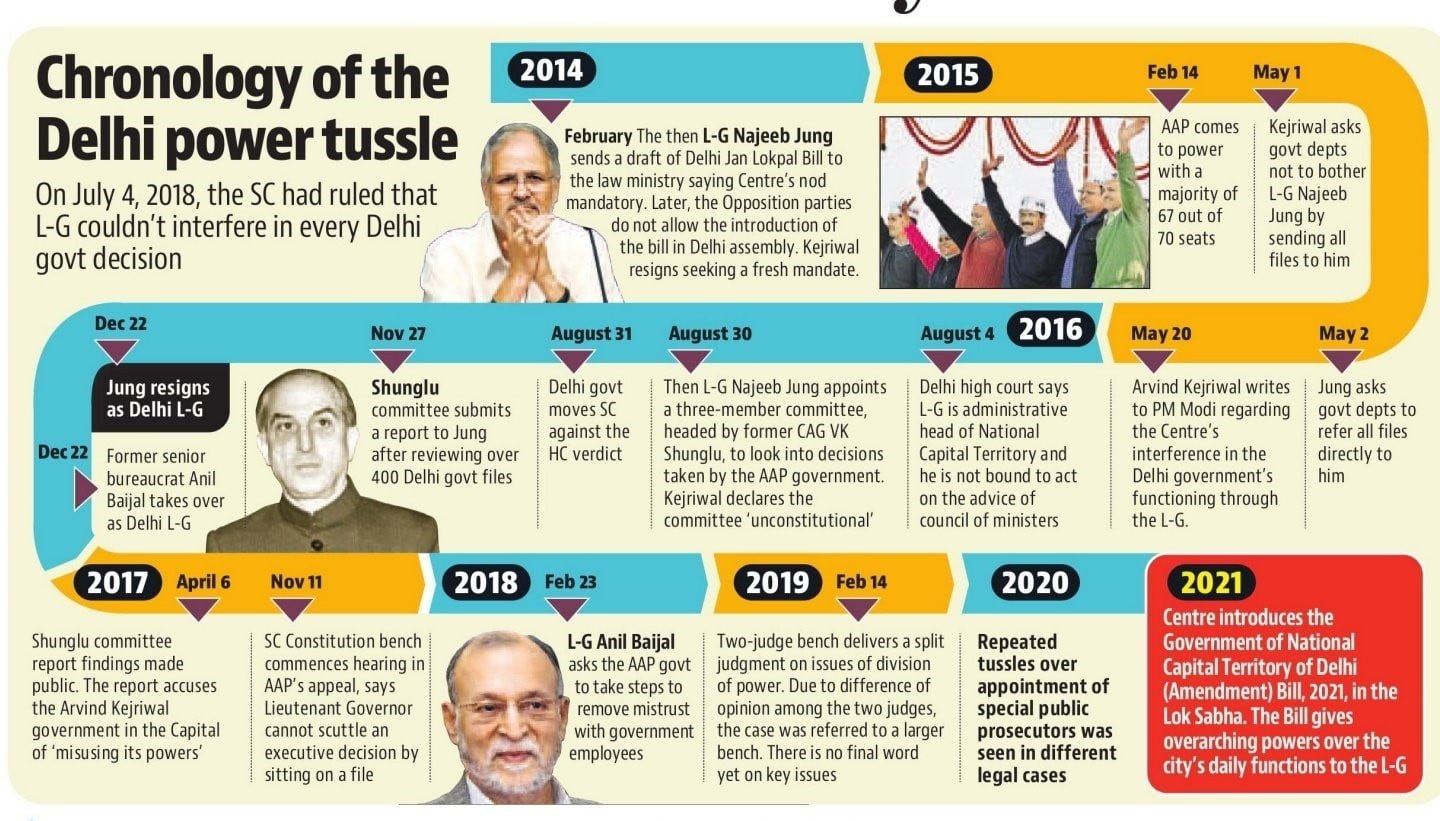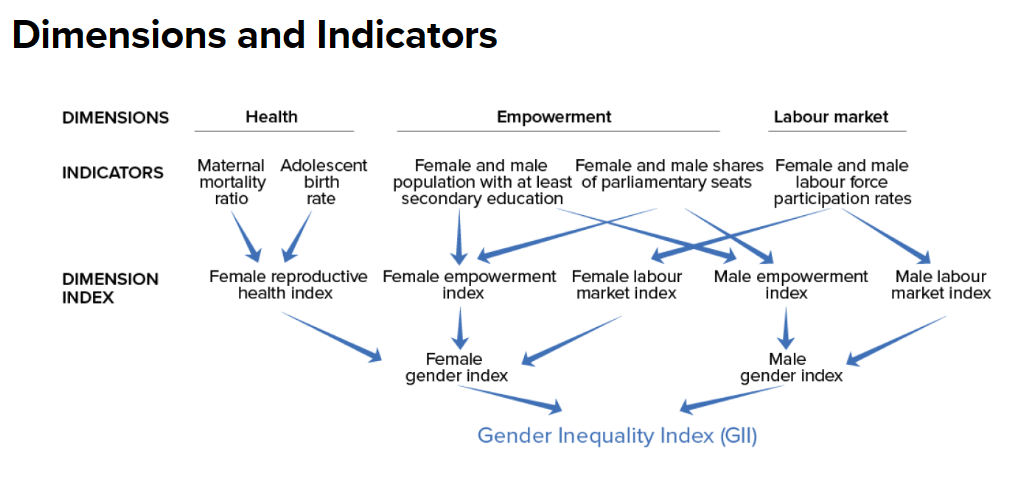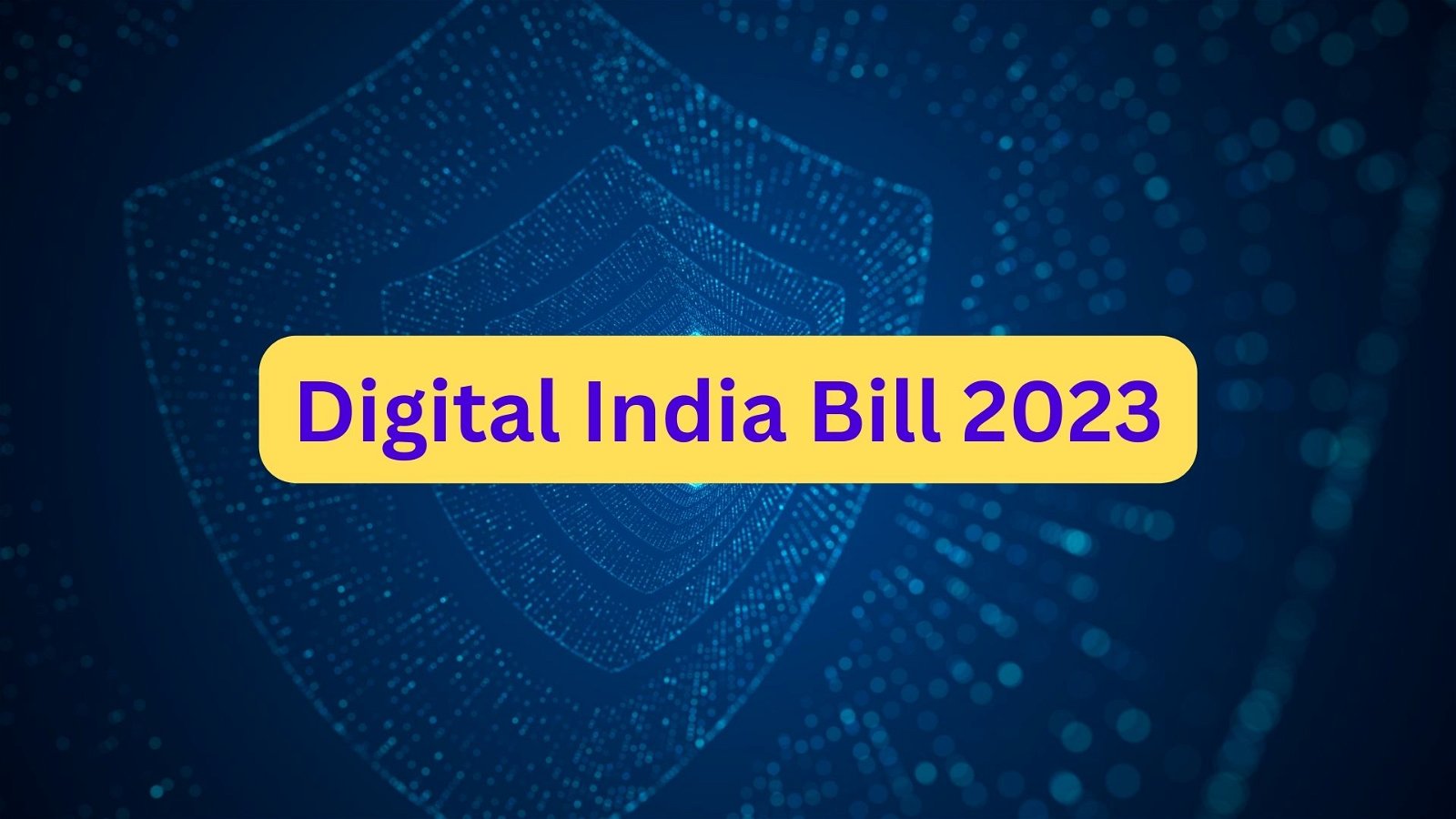- Context (IE I TH I IE): The Uttarakhand UCC Bill, 2024 proposes some significant changes in marriage, adoption, and related aspects.
- Uttarakhand is the first state in India to implement such legislation after independence.
- Portuguese Civil Code – a 156-year-old Code continues to govern Goa and the UTs of Daman & Diu and Dadra & Nagar Haveli.
- After its liberation in 1961, Goa retained the Portuguese Civil Code and was the only state to have a UCC for all religions.
- The rest of India follows different personal laws based on their religious or community identity.
- Madhya Pradesh, Gujarat, and Assam have also initiated the process of formulating a UCC.
- Recently, the Allahabad HC also asked the GOI to initiate the process of implementing UCC.
State-appointed Committee
- Led by retired SC judge Ranjana P Desai to examine and submit a draft for the implementation of a UCC.
Secular laws
- The Code borrows from laws such as The Special Marriage Act of 1954 and The Indian Succession Act of 1925.
- It repeals all family laws to the extent that they are inconsistent with it (UCC).
Objective
- To establish a legal structure that ensures consistency in civil laws for all citizens within the state, irrespective of their religion.
Provisions of the Uttarakhand UCC
Application
- To residents of the state but only to those who identify within the binary genders of male and female and who are in heterosexual relationships.
- It leaves most LGBT persons outside its ambit.
Tribal communities exempted
- The tribal communities comprising 2.9% of Uttarakhand’s population have been exempted.
Live in relationship
- Definition: “Relationship between a man and a woman who cohabit in a shared household through a relationship in the nature of marriage.”
Registration of live-in relationships
- It requires compulsory registration of live-in relationships through a “statement of live-in relationship”.
- It may be terminated by either of the parties to the live-in relationship by submitting a “statement of termination”.
- A woman is also eligible to claim maintenance in case she is “deserted” by her live-in partner.
Penalty for non-registration of live-in relationship
- After serving the notice, criminal prosecution can be initiated against the couple.
- All live-in relationships must be registered within a month, or else both partners are liable to a Rs 25,000 fine and six months in jail.
Legal recognition of children born out of wedlock (Outside the marriage)
- The Bill abolishes the concept of “illegitimate children”.
- It extends legal recognition to children born in void and voidable marriages, as well as children born in live-in relationships.
Legal equality of children
- The Code treats adopted, born through surrogacy, or born through assisted reproductive technology (ART) on an equal footing with other biological children.
- Biological Children: Illegitimate children, adopted children, children born through surrogacy and children born through ART are considered to be biological children.
Legal age for marriage
- The minimum age of marriage is 18 and 21 for Muslim women and men, in line with the Hindu Marriage Act, 1955 and the Special Marriage Act, 1954.
Registration of marriages
- Marriages have to be compulsorily registered regardless of any other existing laws or customs.
- The registration will have to be done within 60 days from the date of the marriage.
- No marriage can be dissolved without a court order, or else it can attract imprisonment for up to 3 years.
Divorce proceedings
- Men and women have been accorded similar rights with respect to divorce.
- Grounds for divorce: Adultery, cruelty, desertion, conversion to another religion, mental disorder, incurable venereal disease, renunciation of the world, absence for seven years, bigamy and failure to comply with maintenance orders.
- In case of divorce, the custody of a child up to 5 years of age remains with the mother.
Voidable marriages
- It can be annulled on grounds such as non-consummation, contravention of marriage conditions, force or coercion in obtaining consent, or pregnancy by someone other than the spouse.
Special rights for women to seek divorce
- If the husband has been found guilty of rape or any unnatural sexual offence or
- If the husband has more than one wife.
Prohibition of bigamy or polygamy
- Neither party should have a living spouse at the time of the marriage.
Degree of prohibited relationship
- Two people are considered to be within the “degrees of prohibited relationship” if a common ancestry is shared or if they are the wife/husband of a common ancestor.
- Exception: Those communities where an established custom allows marriage within the degree of prohibited relationship.
Inheritance rights
- It ensures equal rights in property for both sons and daughters, regardless of their category.
Equal property rights after death
- Following a person’s demise, the bill grants equal property rights to the spouse and children.
- Additionally, equal rights extend to the deceased person’s parents.
- In previous laws, only the mother had rights to the deceased’s property.
Coparcenary property
- It abolishes the coparcenary system, which exists under Hindu personal law.
- It extends the same scheme of succession to all persons irrespective of religion.
- All property will pass as individual property as per the scheme of intestate succession laid down under the Code.
Coparcenary Property or Self-acquired Property
- Under the Hindu Succession Act of 1956, property can be held as coparcenary property or self-acquired property.
- Four generations of Hindus hold ancestral property as coparceners.
- A coparcener refers to an individual who receives a legal right to ancestral property by birth.
- Self-acquired property is individual property and passes as per rules for intestate succession on death.
|
Criminal offences under the Bill
- Child marriage and marrying within prohibited degrees of relationship have been criminalised.
- Dissolution of marriage through modes other than the judicial mode of divorce prescribed under the code is punishable with imprisonment as well as a fine.
- Compelling, abetting, or inducing any person to observe any condition for remarrying is also punishable with imprisonment of up to 3 years.
- Non-registration of live-in relationships has been criminalised.
- Existing Muslim personal law practices governing marriage and divorce, such as nikah halala, iddat, and triple talaq, have been criminalised under the Bill without explicitly naming them.
|
What are the cons of the bill?
Non-recognition of queer relationship
- The bill leaves out the members of the LGBTQIA+ community; It, however, follows the SC verdict and denies equality of marriage.
Supriyo vs Union of India, 2023
- The court declined to grant same-sex couples the right to marry.
- It upheld both the Special Marriage Act (SMA) and the Foreign Marriage Act (FMA) in their current exclusionary form.
- Marriage equality was denied.
|
Irretrievable breakdown of marriage
- It has not been included as the ground for divorce despite being recognised in several SC judgements.
Division of marital estate
- The court has the authority to decide how to divide marital property, especially when it is not jointly owned.
Against Privacy
- The compulsory registration of live-in relationships infringes upon an individual’s freedom to choose not to marry.
Legal Guardians of the children
- It fails to address the discrimination faced by mothers under guardianship laws that treat only fathers as legal guardians of the child,
- Fathers have the power to make decisions in relation to the child, and mothers are custodians of the child, thereby reducing them to caretakers.
Surveillance Regime
- The surveillance regime enabled by the Bill can be misused to harass interfaith and inter-caste couples.
- A UCC seeks to provide one law for the entire country, applicable to all religious communities.
- It seeks to ensure not only the uniformity of laws between communities but also the uniformity of laws within communities, ensuring equality between the rights of men and women.
- A UCC would effectively mean streamlining laws relating to
- Marriage,
- Divorce,
- Adoption,
- Guardianship,
- Succession,
- Inheritance etc.
Personal Laws in India
- Currently, not only Muslims but also Hindus, Jains, Buddhists, Sikhs, Parsis, and Jews are governed by their laws.
- Personal laws are determined based on religious identity.
- The reformed Hindu Personal Law still incorporates certain traditional practices.
- Differences arise when Hindus and Muslims marry under the SPA, where Hindus continue to be governed by Hindu Personal Law, but Muslims are not.
Hindu Personal Laws
- Hindu personal laws have ancient origins, derived from Hindu religious texts and traditions.
- The Manusmriti, one of the earliest sources of Hindu law, dates back over 2,000 years.
- Various other texts and commentaries on Hindu law, such as the Dharmashastras and the Mitakshara, have contributed to the development of Hindu personal laws.
Muslim Personal Laws
- Muslim personal laws in India are based on Islamic Sharia law and jurisprudence.
- The Hanafi, Shafi’i, Maliki, and Hanbali schools of thought within Islam have influenced the interpretation and application of Muslim personal laws.
Christian Personal Laws
- These are primarily governed by the Indian Christian Marriage Act of 1872 and other related laws.
- These were introduced during the British period and were influenced by Christian religious practices.
Parsi Personal Laws
- The Parsi community follows personal laws based on the Parsi Marriage and Divorce Act of 1936.
- These laws were enacted to govern marriage, divorce, and inheritance among Parsis in India.
Sikh Personal Laws
- The Sikh community largely follows the Anand Marriage Act of 1909 for marriage-related matters.
- Sikh religious practices and customs have influenced Sikh personal laws.
|
Constitutionality of UCC
- Article 44 of the IC lays down that the state shall endeavour to secure a UCC for the citizens throughout the Indian territory.
- Article 44 is one of the Directive Principles of State Policy (DPSP).
- DPSP, as defined in Article 37, is not justiciable.
- However, the principles laid down therein are fundamental in governance.
Constitutionality of UCC by States
- Personal laws such as intestacy and succession, wills, joint family and partition, marriage and divorce, relate to Entry 5 of List-III-Concurrent List of the Seventh Schedule of the IC.
- Hence, the States are also empowered to legislate upon them.
Enacting and Enforcing UCC
- While Article 44 uses the words “the state shall endeavour”, other Articles in the ‘DPSP’ use words such as “in particular strive”, “shall, in particular, direct its policy”, “shall be the obligation of the state,” etc.
- Article 43 mentions “the state shall endeavour by suitable legislation”, while the phrase “by suitable legislation” is absent in Article 44.
- This implies that the duty of the state is more significant in other DPSPs than in Article 44.
UCC and Constitutional Assembly (CA) debates
- There was no consensus in the CA about what a potential UCC would entail.
- Many thought that a UCC would coexist alongside personal laws, while others felt that it was to replace personal law.
- Many believed that a UCC would deny freedom of religion.
- The proponents of the UCC in the CA included members like B.R. Ambedkar, Alladi Krishnaswamy Ayyar, and K.M. Munshi. They put forth the following arguments in favour of a UCC-
- Equality and Justice: UCC would uphold the principles of equality and justice.
- Secularism: UCC would align with the secular nature of the Indian state.
- Women’s Rights: It would do away with discriminatory practices prevalent in personal laws, particularly those affecting women’s rights in matters such as marriage, divorce, and inheritance.
- Opponents of the UCC in the CA included members such as Nazirrudin Ahmad and Mohammad Ismail Khan. They expressed the following reservations about the UCC-
- Religious Autonomy: It might infringe on the religious autonomy of various communities, interfering with religious customs and traditions.
- Cultural Sensitivities: It might not adequately accommodate the unique customs and sensitivities of different communities.
- Social Unrest: Implementing a UCC might mean forcing the communities to relinquish their identities; this could lead to social unrest and communal tensions.
- The uncertainty about what was acceptable as ‘freedoms ‘ and what was not led the CA to contain the provision of a UCC in Article 44 of the IC among DPSP rather than Fundamental Rights (FRs).
Background
- Colonial India: The British government report in 1835 stressed the need for uniformity in the codification of laws relating to crimes, evidence, and contracts.
- Personal laws of Hindus and Muslims were to be kept outside such codification.
- B N Rau Committee: The increase in legislation dealing with personal issues forced the government to form a Committee to codify Hindu law in 1941.
- Hindu Succession Act: Based on its recommendations, a bill was adopted in 1956 to codify the law relating to intestate or unwilled succession among Hindus, Buddhists, Jains, and Sikhs.
- Separate Personal Laws: There were separate personal laws for Muslims, Christians and Parsis.
- Religious Rights Vs other FRs: Practices such as triple talaq and polygamy adversely impact the right of a woman to a life of dignity;
- GOI has raised the question of whether constitutional protection given to religious practices should extend even to those that are not in compliance with FRs.
Status of Uniform Codes in India
- Indian laws do follow a uniform code in most civil matters, such as the
- Indian Contract Act of 1872,
- Civil Procedure Code,
- Transfer of Property Act of 1882,
- Partnership Act of 1932,
- Evidence Act of 1872, etc.
- States, however, have made amendments, and therefore, there is diversity even under these secular civil laws.
- Recently, several states refused to be governed by the Uniform Motor Vehicles Act of 2019.
Hindu Code Bills
- The Hindu Code bills were several laws passed in the 1950s to codify and reform Hindu personal law in India in favour of a uniform law code.
- The government successfully implemented the reforms in the 1950s.
- Dr. B. R. Ambedkar was chosen by Nehru in 1948 to serve as the chairman of the subcommittee charged with developing the Hindu Code Bill.
- Four different bills constituted the Hindu Code Bills-
- The Hindu Marriage Act,
- The Hindu Succession Act,
- The Hindu Minority and Guardianship Act, and
- The Hindu Adoptions and Maintenance Act.
- Between the years of 1952 and 1956, each of these was successfully brought in and enacted by Parliament because they faced much less resistance.
The Hindu Succession Act
- It introduced several significant changes to Hindu personal law, particularly with regard to property rights and ownership opportunities for women.
Key provisions of the Hindu Succession Act of 1956 included
- Property Rights for Women: The Act granted women property rights, enabling them to inherit and own property in their own right.
- Daughters became eligible to inherit from their fathers’ estates.
- Rules of Succession: The Act established rules of succession, specifying the order in which heirs would inherit in the case of an intestate male’s death.
- It introduced a distinction between Class I heirs and Class II heirs, with Class I heirs having priority over Class II heirs.
- Amendment in 2005: In 2005, it was amended to enhance gender equality in matters of inheritance further.
- It expanded the category of descendants who could inherit, elevating women to the status of Class I heirs.
- It ensured that daughters would inherit an equal share of property as sons.
- SC, Vineeta Sharma v. Rakesh Sharma, (2020): Daughters, like sons, have an equal birthright to inherit joint Hindu family property.
- The amended Hindu Succession Act, which gives daughters equal rights to ancestral property, would have a retrospective effect.
|
Need for Uniform Civil Code
Ensuring equality
- Presently, in India, different communities are governed by different Personal laws.
- Even within a religion, there is not a single common personal law governing all its members.
- For example, laws differ from place to place for the registration of marriage among Muslims.
- It was compulsory in J&K (1981 Act) and optional in Bengal and Bihar (both under the 1876 Act).
- The Personal Law system violates the principle of equality in the IC.
National integration
- A UCC will separate religion from social relations and personal laws, ensuring equality and, thus, harmony in society.
- It will help the cause of national integration by removing disparate loyalties to the religious law, which has conflicting ideologies.
- UCC could induce custodians of faith to look inward and seek to codify and reform age-old personal laws.
Gender Justice
- UCC will promote gender justice by removing the inbuilt discriminatory provisions of personal laws.
- It would grant equal rights and status to women in matters of marriage, divorce, inheritance, adoption, maintenance, etc.
- Under the Hindu law, the Mitakshara branch of law denied a Hindu daughter a right by birth in the joint family estate; her place in the paternal family was only temporary as she belonged to her husband’s family after marriage.
- Islamic law prescribes that generally, a man’s share of the inheritance is double that of a woman in the same degree of relationship to the deceased.
- Under Muslim law, the father is the sole guardian of the person and property of his minor child.
Freedom of Choice
- A religion-neutral personal law would encourage the protection of couples in case of inter-caste and inter-religious marriages.
- Even Acts like the SPA, 1954 permit any citizen to have a civil marriage outside the realm of any religious personal law.
Simplification and Rationalisation of the Legal System
- It would simplify the legal system by removing the complexities and contradictions of multiple personal laws.
- It would harmonise the civil and criminal laws by removing the anomalies that arise due to different personal laws.
- It would make the law more accessible and understandable for the ordinary people.
Modernisation and Reform of Outdated and Regressive Practices
- UCC would modernise and reform the regressive practices that are prevalent in some personal laws.
- It would eliminate the practices that are against the human rights and values enshrined in the IC, such as triple talaq, polygamy, child marriage, etc.
- It would also accommodate the changing social realities and aspirations of the people.
Elevates Global Image
- It would enhance India’s international image as a progressive and inclusive democracy.
- It would align India’s legal framework with global human rights standards.
Essentials and Non-Essentials of a Religion
- It is argued that UCC will only deal with non-essential practices of a religion and thus will not violate the religious freedom of communities.
The Doctrine of Essentiality
- The essential practices doctrine originates from a speech made by B.R. Ambedkar in the CA.
- He strived to distinguish the religious from the secular and argued that the state should be allowed to intervene in matters connected to religion but not intrinsically religious.
‘Shirur Mutt’, 1954
- The doctrine of “essentiality” was invented by a seven-judge Bench of the SC.
- The term “religion” will cover all rituals and practices “integral” to a religion.
- SC took upon itself the responsibility of determining the essential and non-essential practices of a religion.
Examples
- 1994: SC held that the mosque is not an essential practice of Islam, and a Muslim can offer namaz (prayer) anywhere, even in the open.
- 2004: SC held that the Ananda Marga sect had no FR to perform Tandava dance in public streets since it did not constitute an essential religious practice of the sect.
- 2006: SC upheld the right of a Sikh student to wear a Kirpan while attending class without harming others.
- 2016: SC upheld the discharge of a Muslim airman from the Indian Air Force for keeping a beard, distinguishing the case from that of Sikhs who are allowed to keep a beard.
|
Challenges in Implementing UCC
Diverse Personal Laws and Customary Practices
- India is a country of diverse religions, cultures and traditions.
- Each community has its own set of personal laws and customs that govern their civil matters.
- These laws vary widely across regions, sects and groups.
- Finding common ground and uniformity among such diverse groups is very difficult and complex.
- Many personal laws are not codified or documented but are based on oral or written sources that are often ambiguous and contradictory.
Resistance from Religious and Minority Groups
- Many religious groups view UCC as an infringement on their religious freedom and autonomy.
- They believe UCC would impose a majoritarian law disregarding their identity and diversity.
Lack of Political Will and Consensus
- There is a lack of consensus among the government, the legislature, the judiciary and the civil society to initiate and implement UCC.
- There are also apprehensions that UCC could provoke communal tensions and conflicts in society.
Practical Difficulties and Complexities
- It would require consultation and participation of various stakeholders, including religious leaders, legal experts, women’s organisations, etc.
- It would require a massive exercise of drafting, codifying and rationalising the various personal laws and practices in India.
- It would also require a robust mechanism of enforcement and awareness to ensure compliance and acceptance by the people.
Constitutional Hurdle
- Article 25 of the IC gets into conflict with the concepts of equality enshrined in the IC.
Secularism and UCC
- The principle of UCC essentially involves the question of secularism.
- There are various interpretations of secularism, and it is on the altar of all these interpretations that the UCC is both glorified and criticised.
- Some factions consider the UCC non-secular, while some regard it as the harbinger of communal harmony and secularism.
- Some argue that personal laws are part and parcel of religion and culture.
- Any interference would be tantamount to interference with the way of life of those who had been observing such laws from generation to generation.
- Others argue that the UCC is not opposed to secularism and will not violate Articles 25 and 26 of the IC.
- Article 44 of the IC is based on the concept that there is no necessary connection between religion and personal laws in civilised society.
|
- Articles 371 (A) to (I) and VIth Schedule of the IC provide certain protections to the states of Assam, Nagaland, Mizoram, Andhra Pradesh and Goa with respect to family law.
Women’s reservation in ULBs
- Nagaland witnessed a protest against the provision of reservation of 33% seats for women.
- The apex tribal body of Nagaland, Naga Hoho, argued that women have traditionally not been part of decision-making bodies.
- The 33% reservation of seats for women would violate the special provisions granted to Nagaland by Article 371A of the Constitution.
|
- While uniformity in personal laws is envisaged through Article 44, the inclusion of personal laws in the concurrent list indicates the protection of diversity in personal laws.
Undermining Federalism
- Personal matters being under the Concurrent List, both the Parliament and state legislature are empowered to make laws on them.
- Imposing a UCC could undermine the federal structure by infringing upon the rights of states.
SC on UCC
Shah Bano Begum v. Mohammad Ahmed Khan (1985)
- Upheld the right of a Muslim woman to claim maintenance from her husband under Section 125 of the Criminal Procedure Code, even after the expiry of the Iddat period.
- A UCC would help in removing contradictions based on ideologies.
Sarla Mudgal v. Union of India (1995)
- A Hindu husband cannot convert to Islam and marry another woman without dissolving his first marriage.
- A UCC would prevent such fraudulent conversions and bigamous marriages.
T.M.A Pai Foundation v. State of Karnataka, 2003
- The idea of UCC might not be in accordance with the spirit of Indian secularism, where multiple individual identities co-exist under the umbrella of the national identity.
Shayara Bano v. Union of India (2017)
- The practice of triple talaq is unconstitutional and violative of the dignity and equality of Muslim women.
- Parliament should enact a law to regulate Muslim marriages and divorces.
Indian Young Lawyers Association v. State of Kerala (2018)
- Personal/customary law comes under the ambit of Article 13.
- No religious practice can claim supremacy over the Constitution and its vision of ensuring the sanctity of dignity, liberty and equality.
Law Commission’s Views on Uniform Civil Code
21st Law Commission of India (headed by Justice Balbir Singh Chauhan), 2018
- Implementing a UCC might not be necessary or desirable at this time. Instead, it suggested a series of reforms within various personal laws pertaining to different communities.
- Amendments to existing family laws with the aim of ensuring justice and equality within all religions rather than proposing a single uniform law.
22nd Law Commission of India (headed by Justice Rituraj Awasthi)
- This commission has issued a consultation paper on the UCC, seeking public feedback on the issue.
{GS2 – Social Sector – Health} Eat Right Station Certification
- Context (PIB): 150 railway stations have successfully achieved the prestigious “Eat Right Station” certification.
- Additionally, 6 prominent metro stations have also been accredited as “Eat Right Stations.”
Eat Right Station
- The Eat Right Railway Station is an initiative under the Eat Right India movement led by FSSAI.
- Under this initiative, all food vendors at the railway station are to ensure safe cooking and handling practices during preparation & serving of food.
- “Eat Right Station” certification is awarded by the Food Safety and Standards Authority of India (FSSAI) to railway stations that meet specific criteria related to food safety, hygiene, and nutrition.
Certification Process

Eat Right India Movement
- Launched in 2018 by the FSSAI.
- Aligned with the National Health Policy 2017, aims to transform the country’s food system to ensure safe, healthy, and sustainable food for all Indians.
- The movement focuses on three pillars: Eat Healthy, Eat Safe, and Eat Sustainably.
- The tagline for this campaign is “Sahi Bhojan. Behtar Jeevan.“
|
{GS3 – Agri – MSP} Legalising MSP: Pros and Cons
- Context (TH): This article explores the advantages and disadvantages of legalising MSP, drawing insights from expert discussions.
Advantages of legalising MSP
- Crop diversification: India plans to move from ensuring food security to Nutritional security. Guaranteeing MSP for 23 crops could be the key step in achieving this shift.
- Doubling Farmers’ income: Agricultural sector investment has dropped significantly since the 1991 reforms, causing farmers distress. Legalising MSP is seen as a solution, and it’s important to note that the government won’t purchase all 23 crops.
- Digitalisation: The government aims to make transactions digital and formal. Legalising MSP aligns with this goal, as many farmers sell goods in informal markets.
- Reduce Inflation: Farmers sell their produce at low local prices that don’t cover production costs. On the other hand, consumers are facing huge price rises. Consumers face high prices. Legalising MSP can lower inflation, safeguard consumers, and provide fair income to farmers.
Challenges
- The APMC mandi system works in only a few Indian states, not in most. Less than one-third of the crops are traded through mandis, with the rest sold to local traders by small farmers. Even if MSP becomes legal, tracking buyers and sellers is challenging without a functional system.
- The government cannot decide the prices of every agricultural commodity. Many farmers and organisations prefer selling to corporates.
Way forward
- Making Agriculture remunerative
- The government can ensure a remunerative price for farmers. For example, In Punjab, a price payment deficiency system is possible because the mandi system is well-developed. It should be a State-by-State policy.
- The input cost calculation methods, such as A2+FL and C2+50%, should be tweaked to make them more beneficial for farmers.
-
Exploring Alternatives
- Co-operatives in agriculture can help farmers realise better prices. However, Government-supported cooperatives have failed because of corruption. We need a legal framework to regulate co-operatives.
- Also, storage structures where the farmers can store their produce at reasonable prices to reap the benefits of higher prices in the off-season need to be built.
{GS3 – Envi – Conservation} International Big Cat Alliance
- Context (IE | DTE | PIB): Union Cabinet approved the creation of International Big Cat Alliance (IBCA) to set up a global network for the conservation of tigers and other big cats.
- The Union Cabinet has also allocated a one-time budgetary support of Rs 150 crore for IBCA for a five-year period — 2023-24 to 2027-28.
- International Big Cat Alliance (IBCA) is a multi-country, multi-agency coalition of 96 big cat range countries, non-range countries interested in big cat conservation, conservation partners and scientific organizations working in the field of big cat conservation besides business groups and corporates, to establish networks and develop synergies in a focused manner.
- Its idea was 1st floated by India’s Prime Minister in 2019. It was launched in April 2023 to celebrate the 50th anniversary of Project Tiger.
- It aims at conservation of seven big cats namely Tiger, Lion, Leopard, Snow Leopard, Cheetah, Jaguar, and Puma.
- Objectives of IBCA:
- To stop the illegal wildlife trade of the seven big cats.
- To work towards the conservation of natural habitats of the seven big cats.
- Mobilisation of financial and technical resources for implementing the conservation and protection agenda.
Governing structure
- It will consist of an Assembly of Members, Standing Committee and a Secretariat, with its headquarters in India.
- Its Framework of Agreement (statute) has been drafted largely on the pattern of the International Solar Alliance.
- The statute of IBCA will be finalised by an International Steering Committee.
- A Steering Committee will be constituted with nominated national focal points of founding member countries.
- Appointment of DG by MoEFCC as Interim Head of IBCA Secretariat till IBCA appoints its own DG during Assembly meeting.
- IBCA Assembly at Ministerial level to be chaired by President, HMEFCC, Gol.
Big Cats
- ‘Big Cat’ is a term that is used to apply to any large species of the family Felidae. Usually, it applies to the members of the genus Panthera. These include:
- Tiger (Panthera tigris)
- Lion (Panthera leo)
- Jaguar (Panthera onca)
- Leopard (Panthera pardus)
- Snow Leopard (Panthera uncia)
- Two other cats, i.e. Puma (Puma concolor) and Cheetah (Acinonyx jubatus), are not part of Panthera. But they are usually included in most listings of ‘big cats’.
- All these cats can usually make vocalisations known as ‘roars’.
- The Indian subcontinent has been historically home to the Bengal tiger, Asiatic lion, Indian leopard, Indian/Asiatic cheetah as well as Snow leopard.
- The cheetah was declared extinct in 1952. In 2022, the Government of India embarked on an ambitious programme to introduce African cheetahs to the Kuno National Park in MP.
To learn in details about Big Cats, refer to PMF IAS Current Affairs August 06, 2023.
{GS3 – Envi – Conservation} Status of Leopards in India Report 2022
- Context (IE | DTE | TH | PIB): India’s leopard numbers rose by 8% from 12,852 in 2018 to 13,874 in 2022, according to a report by the Environment Ministry.
- The estimation (5th cycle) was carried out by National Tiger Conservation Authority and Wildlife Institute of India, in collaboration with State Forest Departments, as part of the quadrennial “Monitoring of Tiger, Co-predators, prey and their habitat” exercise in tiger range States.
- The fifth cycle focused on forested habitats within 18 tiger states, covering four major tiger conservation landscapes.
- Non-forested habitats, arid, and high Himalayas above 2000 mean sea level were not sampled.
- The survey covered 20 States of India & focussed on about 70% of animals’ expected habitat.

Leopard Count in States
- There has been a 1.08% annum growth in leopard numbers.
- About a third of the leopards are within protected areas.
- Madhya Pradesh, located in Central India, houses more leopards than any other Indian state at 3,907 followed by Maharashtra, Karnataka, and Tamil Nadu.
- Among the country’s physiographic regions, Central India and the Eastern Ghats, the Western Ghats and the hills of the northeast, and the Brahmaputra flood plains recorded growth of 1.5%, 1% and 1.3% per annum respectively.
- Shivalik hills and Gangetic plains showed a -3.4 per cent decline per annum.
- Tiger Reserves or sites with highest leopard population: Nagarajunasagar Srisailam (Andhra Pradesh), followed by Panna (Madhya Pradesh), and Satpura (Madhya Pradesh).
- About 65% of the leopard population is present outside protected areas in Shivalik landscape.
To learn in detail about Leopards, refer to PMF IAS Current Affairs August 06, 2023.
{GS3 – IE – Banking} National Urban Co-operative Finance and Development Corporation Limited (NUCFDC)
- Context (PIB): The Union Home Minister will launch the National Urban Co-operative Finance and Development Corporation Limited (NUCFDC) in New Delhi.
- It will serve as the umbrella organisation for the Urban Cooperative Banks (UCBs),
- This initiative aims to modernise and strengthen the Urban Cooperative Banking Sector in India.
- The NUCFDC has received a Certificate of Registration (CoR) from the RBI to operate as a Non-Banking Finance Company (NBFC).
- It will be allowed to operate as a Self-Regulatory Organization (SRO) for the sector.
Need for NUCFDC
- At present, there are over 1,500 scheduled and non-scheduled UCBs in India, with a total number of branches exceeding 11,000.
- The banks have a deposit size of over Rs 5.33 lakh crore and total lending of more than Rs 3.33 lakh crore.
- Many of these banks have constraints related to technology platforms and difficulties in offering modern banking services.
- By being part of NUCFDC, most of these banks would be able to upgrade to the latest technology and will be able to offer new products and services.
- The NUCFDC would set up a technology platform that can be shared by all UCBs, enabling them to widen their range of services at a relatively lower cost.
- The establishment of NUCFDC will ensure specialised functions and services to cooperative banks and facilitate communication between banks and regulators.
- The NUCFDC will raise capital of Rs.300 crores to utilise this capital to support UCBs.
- It can also offer fund management and other consultancy services.
{GS3 – IE – Industry} India’s First Semiconductor Fabrication Plant
- Context (IE | PIB): Govt approves India’s First Semiconductor Fabrication Plant.
-
- Location: Dholera, Gujarat.
- Investment: Rs.91,000 crore.
- Capacity: 50,000 wafer starts per month (WSPM).
- It is proposed to be developed as a pure-play foundry that rolls out semiconductor wafers for a number of industries.
- It would include high-performance computing, display drivers and microcontrollers (MCU).
- Fabs are highly specialised semiconductor manufacturing facilities that print the miniaturised integrated circuits from the chip design into the silicon wafers.
|
Significance
- Self-reliance: 70% of the current global manufacturing capacity is confined to South Korea, Taiwan and China, the rest with the US and Japan (according to SEMI). Having a local chip fabrication plant is a significant boost for India’s economy and strategic needs.
- Geo-political advantage: The relations between the key players in technology, the US and China are strained. It offers India the opportunity to play a larger role in this sector.
- Skilled workforce: Establishing a foundry domestically may help train engineering students locally, reducing the need to travel abroad for hands-on experience and potentially encouraging more engineers to join the field in India.
|
India’s unique opportunity in electronics: India’s collaboration with the US, EU, Japan, and Korea is aiding its semiconductor and electronics ambitions. Meanwhile, other nations, previously considered ahead, grapple with export control issues that hinder their progress.
|
Challenges
- It takes time for India to manufacture chips at highest levels of sophistication. India faces challenges in semiconductor development as its allies, like the US and EU, offer more attractive incentives. This compels India to focus on older nodes, like 28 nm, rather than cutting-edge nodes used in smartphones and laptops.
-
The fabrication process is Complex:
- It requires clean rooms designed to maintain sterile conditions to prevent contamination by air particles.
- There could be between 500 and 1,500 steps in the overall manufacturing process of semiconductor wafers, requiring multiple inputs and other infrastructural prerequisites such as clean water supply and uninterrupted power supply.
- Insufficiency in semiconductor R&D: India also currently lacks original research in semiconductor design. (However, the government is working to set up a Rs 10,000 crore R&D lab at Semiconductor Laboratory (SCL) in Mohali).
-
Shortage of skilled talent for semiconductor fabrication plants despite being a major hub for chip design engineers.
To know more about the semiconductor industry, visit > Semiconductor Manufacturing in India, Design Linked Incentive (DLI) Scheme
{Prelims – Envi – Species} Melanochlamys droupadi
- Context (TH): A newly discovered marine slug mollusc, Melanochlamys droupadi, found in Odisha and Bengal beaches, named after President Droupadi Murmu by Zoological Survey of India.
- Molluscs are a group of invertebrate animals characterized by soft bodies often protected by a hard shell.
|

- Physical Characteristics:
- Short, blunt, cylindrical body with a flat and broad structure.
- Smooth dorsal surface with two dorsal shields.
- Maximum length up to 7 mm.
- Brownish-black with a distinctive ruby red spot.
- Hermaphrodite (possessing both male and female reproductive organs, structures, and tissue).
- Habitat: Found in the intertidal zone.
- Behaviour: They leave crawl marks on sandy beaches and prefer hiding beneath the sand.
- Distribution: In temperate regions of the Indo-Pacific Oceanic realm.
Sea slugs
- These are a group of molluscs primarily inhabiting marine environments characterized by their slug-like appearance.
- They are distributed from the shallow intertidal zones to the depths of the ocean, spanning from polar regions to the tropics.
- These creatures are known for their agility as hunters, preying upon organisms like shelled and unshelled sea slugs, roundworms, marine worms, and small fishes.
- A total of 18 species of sea slugs have been discovered worldwide.
|
{Prelims – Sci – Bio – Diseases} Haemophilia A
- Context (PIB): India has conducted the 1st human clinical trial of gene therapy for haemophilia A at Christian Medical College (CMC) Vellore.
- The trial utilized a cutting-edge lentiviral vector to insert a functioning FVIII gene into the patient’s hematopoietic stem cells.
- It aims to enable these modified stem cells to produce FVIII, potentially correcting the genetic defect at its source.
- The programme is supported by the Department of Biotechnology and the Centre for Stem Cell Research in collaboration with Emory University, USA, at CMC Vellore.
- A lentiviral vector is a modified virus used to deliver therapeutic genes into cells for gene therapy.
- Hematopoietic stem cells are multipotent cells found in the bone marrow that give rise to all types of blood cells.
|
Haemophilia
- Haemophilia is a genetic disorder causing ineffective blood clotting due to low levels of clotting factors.

- It can be inherited or develop later in life, primarily affecting males.
- Causes: It stems from mutations in genes on the X chromosome, responsible for producing clotting factor proteins essential for blood clot formation.
- Symptoms include spontaneous or injury-induced bleeding into joints, skin, muscles, and soft tissues.
- Haemophilia A lacks factor VIII, while Haemophilia B lacks factor IX.
- Treatment involves intravenous infusion of clotting factor concentrates.
- Haemophilia A occurs in about 1 in 5,000 births, while Haemophilia B is rarer at about 1 in about 20,000 births.
- Queen Victoria of Britain (1819-1901) was a prominent carrier of haemophilia, leading to its spread among various European royal families, earning it the nickname “royal disease.”
|
Why is Haemophilia More Common in Boys?
- Boys have one X chromosome, so if it carries the faulty gene, there’s no backup, causing haemophilia.
- Girls have two X chromosomes, so if one has the faulty gene, the other can compensate, lowering the risk of haemophilia symptoms.
Gene Therapy
- Gene therapy is a medical technique for treating diseases by modifying genes.
- It involves inserting healthy genes into cells to replace or correct faulty ones.
- It can address both inherited disorders like haemophilia and acquired diseases like leukaemia.
Newsletter Updates
Subscribe to our newsletter and never miss an important update!
Assured Discounts on our New Products!










![PMF IAS Environment for UPSC 2022-23 [paperback] PMF IAS [Nov 30, 2021]…](https://pmfias.b-cdn.net/wp-content/uploads/2024/04/pmfiasenvironmentforupsc2022-23paperbackpmfiasnov302021.jpg)










